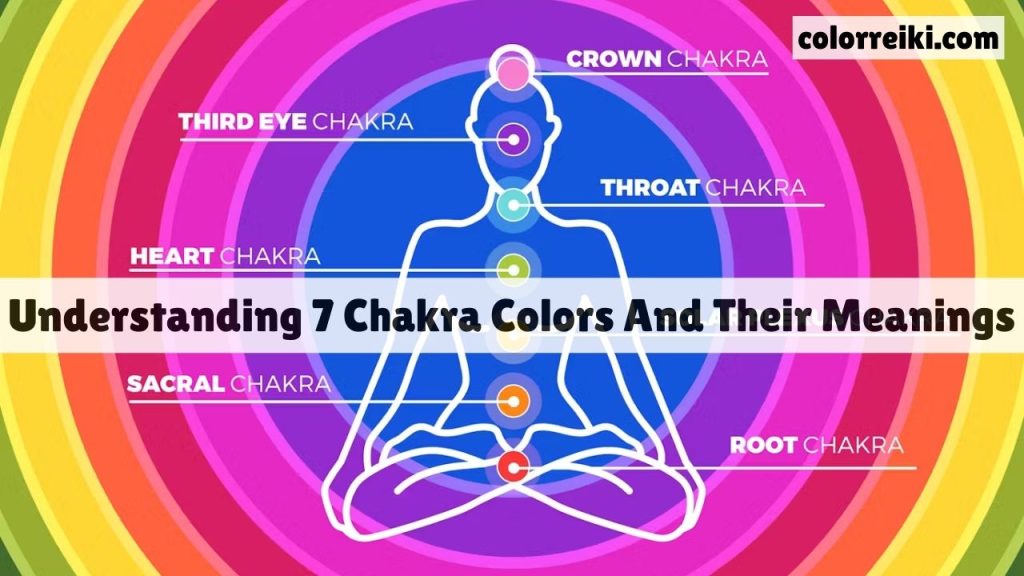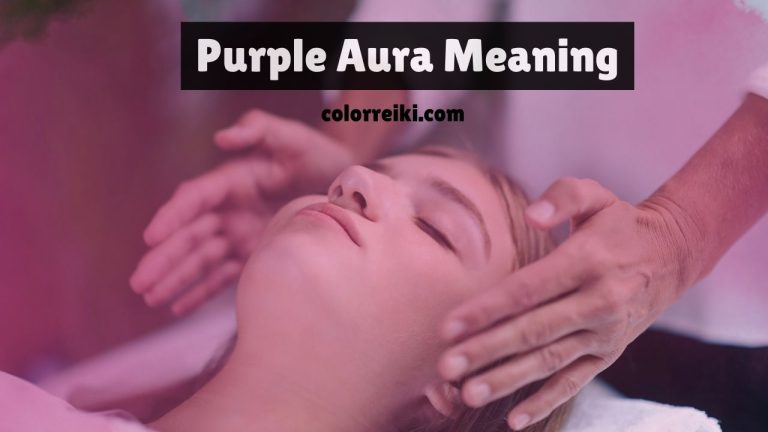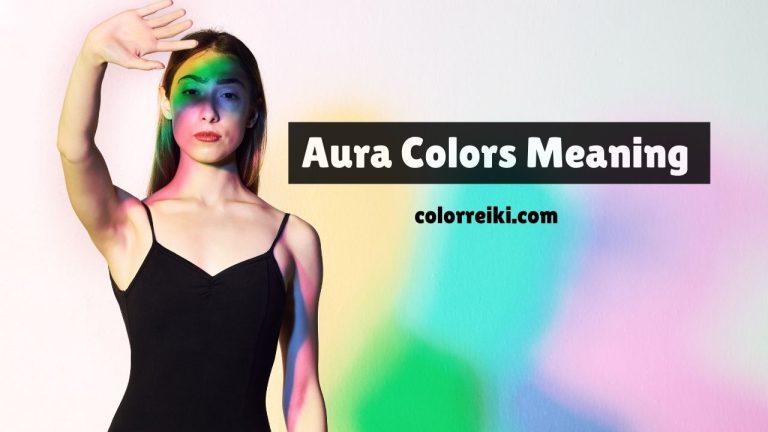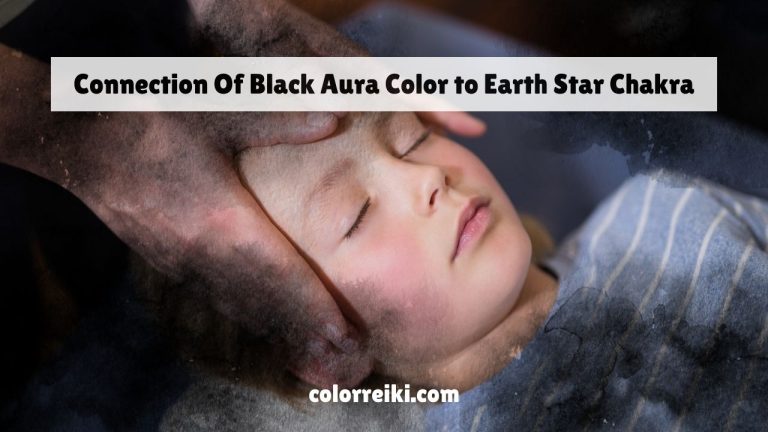The 7 Chakra Colors: Their Meanings, Symbols And Locations
In today’s fast-paced world, many people feel unbalanced and disconnected from their inner selves. This imbalance often manifests as physical ailments, emotional distress, and a general sense of dissatisfaction with life. If you feel overwhelmed and disconnected, you might be searching for a solution to bring harmony and peace back into your life.
Understanding and working with chakra colors can be a powerful way to restore balance and enhance overall well-being. Chakra colors represent the various energy centers in our bodies, each influencing different aspects of our physical, emotional, and spiritual health. This comprehensive guide will delve into the meanings of these colors, their associated chakras, and how to use them for healing and personal growth.

Understanding Chakra Colors and Their Meanings
Chakra colors are a crucial aspect of energy healing, representing the various energy centers in our body. Each color corresponds to a specific chakra, influencing our physical, emotional, and spiritual well-being. By understanding these colors, you can gain insights into your energy flow and identify areas that may need attention.
Chakra Colors Chart: A Visual Guide
A visual guide to chakra colors can help you quickly identify the color associated with each chakra. This chart serves as a reference for understanding the connection between colors and their respective energy centers. Here’s a brief overview:
- Root Chakra: Red
- Sacral Chakra: Orange
- Solar Plexus Chakra: Yellow
- Heart Chakra: Green
- Throat Chakra: Blue
- Third Eye Chakra: Indigo
- Crown Chakra: Violet
How to See Chakra Colors: Tips and Techniques
Seeing chakra colors involves tuning into your body’s energy field through various techniques:
- Meditation and Relaxation: Finding a quiet space and relaxing your mind and body can help you become more aware of your energy centers. Regular meditation practices can heighten your sensitivity to these energies.
- Visualization Exercises: Visualizing each chakra and its corresponding color can enhance your perception of these energy centers. Imagine each chakra as a spinning wheel of vibrant color, focusing on the specific hues.
- Sensing Energy Vibrations: Some people can sense chakra colors by feeling the vibrations and energy flow within their bodies. You can practice this by placing your hand over each chakra and noticing any sensations, such as warmth, tingling, or pressure.
Practicing these techniques regularly can improve your ability to perceive and understand chakra colors, allowing you to work with them more effectively.
The 7 Chakras and Their Corresponding Colors
Each of the seven chakras has a specific color associated with it, reflecting its unique energy and function. Here is a detailed explanation of each:
1. Root Chakra Color Meaning: Stability and Grounding
- Color: Red
- Meaning: The root chakra, located at the base of the spine, is associated with the color red. It represents safety, security, and grounding, providing a stable foundation for the other chakras.
A balanced root chakra helps you feel secure and grounded, fostering a sense of stability and confidence in your daily life. When this chakra is balanced, you may feel a strong connection to the earth and a sense of belonging. However, an imbalanced root chakra can lead to feelings of insecurity, fear, and anxiety. Physical symptoms may include issues with the legs, feet, and lower back.
2. Sacral Chakra Color Meaning: Creativity and Passion
- Color: Orange
- Meaning: The sacral chakra, located below the navel, is associated with the color orange. It governs creativity, pleasure, and passion.
A healthy sacral chakra enhances your creativity and ability to enjoy life, promoting emotional stability and the capacity to experience pleasure. When this chakra is balanced, you may feel vibrant, enthusiastic, and creatively inspired. An imbalance can result in emotional instability, a lack of creativity, and difficulties in relationships. Physical symptoms may include issues with the reproductive organs, kidneys, and bladder.
3. Solar Plexus Chakra Color Meaning: Confidence and Empowerment
- Color: Yellow
- Meaning: The solar plexus chakra, located in the upper abdomen, is associated with the color yellow. It represents confidence, self-esteem, and personal power.
Balancing this chakra can boost your self-confidence and sense of empowerment, allowing you to assert yourself and pursue your goals with determination. A balanced solar plexus chakra can help you feel motivated, disciplined, and in control of your life. An imbalance may result in feelings of inadequacy, low self-worth, and lack of direction. Physical symptoms may include digestive issues and problems with the liver and pancreas.
4. Heart Chakra Color Meaning: Love and Compassion
- Color: Green
- Meaning: The heart chakra, located in the center of the chest, is associated with the color green. It governs love, compassion, and empathy.
A balanced heart chakra fosters loving relationships and emotional well-being, promoting feelings of love, compassion, and forgiveness. When this chakra is balanced, you may feel connected to others and open to giving and receiving love. An imbalance can cause issues with jealousy, anger, and emotional pain. Physical symptoms may include heart problems, respiratory issues, and upper back pain.
5. Throat Chakra Color Meaning: Communication and Self-Expression
- Color: Blue
- Meaning: The throat chakra, located at the throat, is associated with the color blue. It represents communication, self-expression, and truth.
Balancing the throat chakra enhances your ability to communicate clearly and express yourself, enabling you to speak your truth and listen to others with understanding. A balanced throat chakra helps you articulate your thoughts and emotions effectively. An imbalance can lead to difficulties in communication and self-expression, resulting in misunderstandings and feelings of isolation. Physical symptoms may include throat problems, thyroid issues, and neck pain.
6. Third Eye Chakra Color Meaning: Intuition and Insight
- Color: Indigo
- Meaning: The third eye chakra, located between the eyebrows, is associated with the color indigo. It governs intuition, insight, and wisdom.
A balanced third eye chakra sharpens your intuition and insight, allowing you to perceive deeper truths and gain wisdom from your experiences. When this chakra is balanced, you may feel more connected to your inner guidance and have a clear vision of your life’s path. An imbalance can confuse, lack of clarity, and difficulty in making decisions. Physical symptoms may include headaches, vision problems, and sinus issues.
7. Crown Chakra Color Meaning: Spiritual Connection and Enlightenment
- Color: Violet
- Meaning: The crown chakra, located at the top of the head, is associated with the color violet. It represents spiritual connection, enlightenment, and higher consciousness.
Balancing the crown chakra connects you to higher spiritual realms and promotes a sense of peace and enlightenment, fostering a deep connection with your higher self and the universe. A balanced crown chakra helps you feel a sense of unity and purpose. An imbalance can lead to feelings of disconnection, spiritual crisis, and lack of direction. Physical symptoms may include headaches and neurological issues.
Reiki Techniques for Balancing Chakra Colors
Reiki is an effective method for balancing and harmonizing chakra colors, promoting overall well-being. Here are some techniques:
Chakra Color Meditation: A Step-by-Step Guide
- Find a Quiet Space: Choose a comfortable, quiet space where you won’t be disturbed.
- Set Intentions: Focus on your intention to balance and harmonize your chakras.
- Visualize Colors: Visualize each chakra and its corresponding color, starting from the root chakra and moving up to the crown chakra.
- Focus on Breath: Breathe deeply and steadily, allowing the colors to fill and balance each chakra.
- Seal with Reiki Symbols: Use Reiki symbols to seal and enhance the healing process.
This meditation can be practiced daily to maintain balanced chakras and promote overall well-being.
How to Use Chakra Colors for Energy Healing
- Use Corresponding Colors for Each Chakra: Incorporate colors into your environment and clothing to support specific chakras. For example, wearing red can help balance the root chakra, while wearing green can support the heart chakra.
- Visualize Colors During Reiki Sessions: Visualize the corresponding color as you focus on each chakra during a Reiki session. This can enhance the healing process and help clear any blockages.
- Incorporate Colors into Meditation Practices: Use colored crystals, candles, and other tools to enhance your meditation practice. Placing a green crystal on your heart chakra, for example, can help promote love and compassion.
Incorporating these Chakra techniques into your daily routine can help maintain balanced and harmonious chakras, promoting overall health and well-being.
Note: Check out reliable sources like Healthline for more authentic details about Reiki Principles.
Conclusion
Chakra colors play a vital role in energy healing, offering a powerful tool for balancing and harmonizing our energy centers. By understanding the meanings and correspondences of each chakra color, we can harness their potential for personal growth, healing, and spiritual evolution.
Remember, the key to unlocking the power of chakra colors lies in awareness, intention, and practice. Through meditation, visualization, and Reiki techniques, you can maintain balanced chakras and promote overall well-being. Embrace the vibrant energy of chakra colors and let them guide you on your journey to a more harmonious and fulfilling life.
Want to read more? Explore my article on the Principles of Reiki, Aura Colors, and Benefits of Reiki.
Frequently Asked Questions About Chakra Colors
1. What are the Colors of the 7 Chakras?
The seven chakras and their corresponding colors are:
1) Root Chakra: Red
2) Sacral Chakra: Orange
3) Solar Plexus Chakra: Yellow
4) Heart Chakra: Green
5) Throat Chakra: Blue
6) Third Eye Chakra: Indigo
7) crown Chakra: Violet
2. How Do I Know My Chakra Color?
Online quizzes can provide insights into your dominant chakra color. A Reiki practitioner can assess your energy centers and provide guidance. Pay attention to colors you are naturally drawn to, as they may reflect your dominant chakra color.
3. What Color Chakra Calms Anxiety?
Blue (Throat Chakra): Blue has calming properties and can help reduce anxiety by promoting clear communication and expression.
Green (Heart Chakra): Green is soothing and can help alleviate anxiety by fostering feelings of love and compassion.
4. What Do All 7 Chakras Do?
The chakras regulate the flow of energy throughout the body. Each chakra affects different aspects of your health and well-being. Balanced chakras contribute to overall health, while imbalances can lead to physical and emotional issues.
5. How Can I Balance My Chakras?
Meditation: Regular meditation focused on each chakra can help balance your energy centers.
Yoga: Specific yoga poses can align and activate your chakras.
Reiki: Reiki sessions can help clear blockages and balance your chakras.
Crystals: Using crystals associated with each chakra can support their healing and balance.






